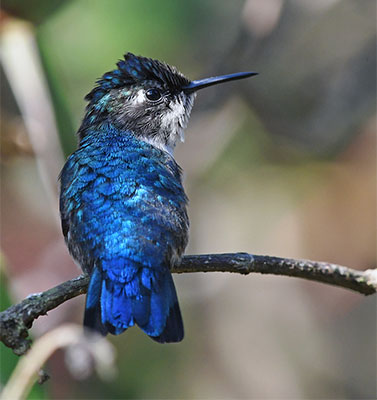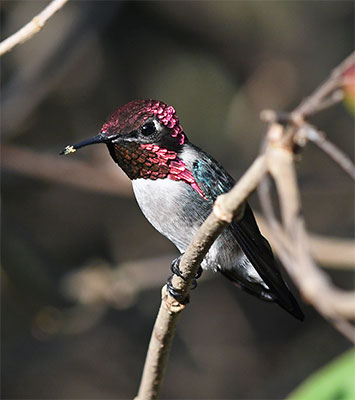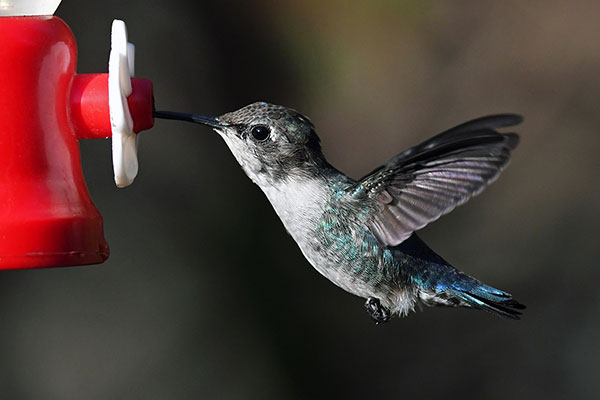The charisma that a bird exudes has nothing to do with its size. This adage is proven by none other than the diminutive Bee Hummingbird, the world’s smallest bird. Measuring a mere 2.4 inches and weighing less than 2 grams, the Bee Hummingbird is often mistaken for a bee as it flits from flower to flower in search of high-calorie nectar, wings beating at an incredible 80 times per second. By comparison, the Ruby-throated Hummingbird of Eastern North America is almost double in size!

© Josh Vandermeulen
Once you’ve managed to spot it – and it may take a while as you scan the foliage – it is hard to not be captivated by this feathered jewel as its brilliant iridescent colors shine in bright sunlight. In breeding plumage, the male will display a fiery pinkish-red colour on its head and throat, with upperparts that are turquoise year-round. The female retains the turquoise but is pale grey and white below. The non-breeding male sports a similar plumage to the female but can be distinguished by the black tips on the tail feathers compared to the female’s white.

© Josh Vandermeulen
Being the world’s smallest bird isn’t the Bee Hummingbird’s only claim to fame. It also builds the world’s smallest nest – only one inch wide – and lays eggs that are no bigger than coffee beans!
Bee Hummingbirds are found in a variety of habitats in Cuba, including the rainforest, dry forests, and at forest edges. They have also been observed in mountain valleys, swamps, and rural gardens. Unfortunately, habitat loss and deforestation have made this “gem” of a bird a threatened species. Further, its minuscule size makes it a prize target for predators, including other birds, frogs, and even larger insects such as wasps and spiders.
But where, you may then ask, can I find this bird?
The answer is Cuba, home to numerous (sometimes bizarre!) bird species and the only country where the Bee Hummingbird can be viewed and enjoyed!

© Josh Vandermeulen


